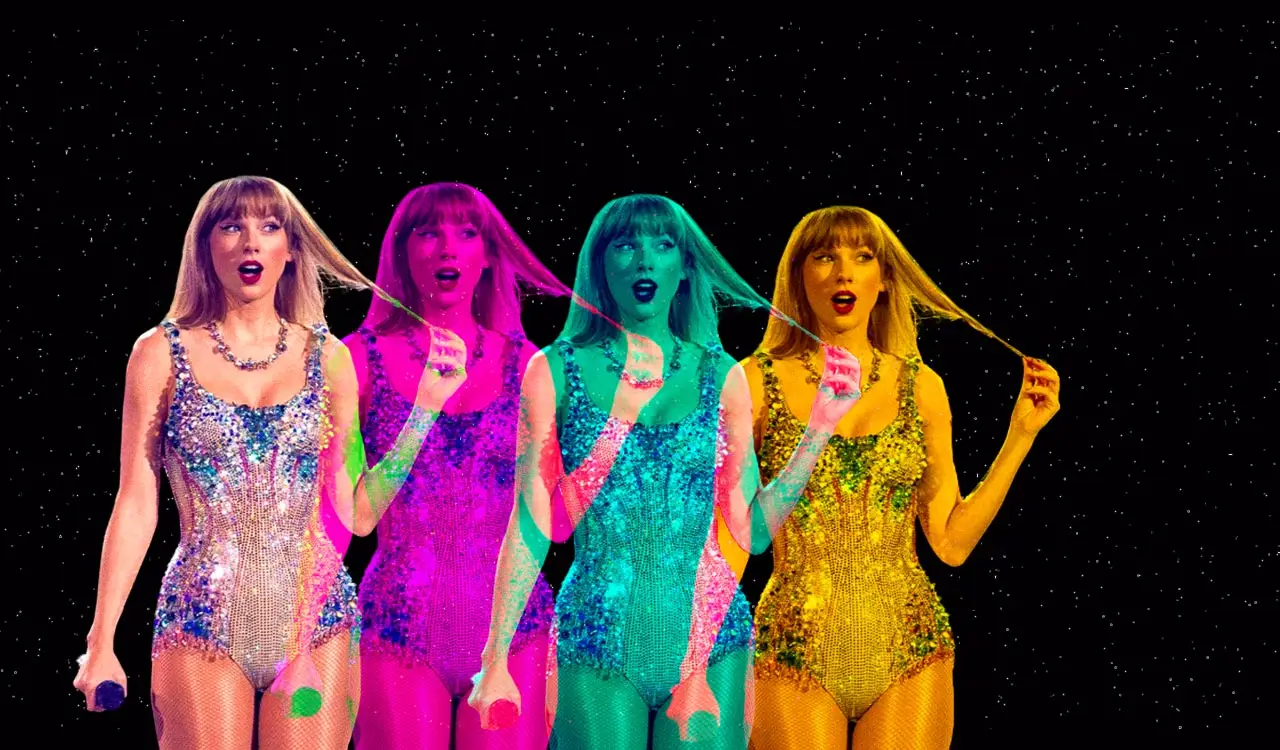“The T Swift Effect” aka “The Taylor Effect” sounds like a seismic happening. If Taylor Swift has ever held a concert in your town, or if you have a Swiftie in your family, you already know that “seismic happening” is an understatement. “The T Swift Effect” refers to the economic boost in cities where Taylor Swift holds concerts, as well as the significant sales spike of any event or product with which T Swift is peripherally associated.
“Consumers have accumulated savings and the desire to attend live events over years of quarantines and lockdowns. Their resulting Carpe Diem attitude manifests in the phenomenon of attendance at live concerts and events driving more spending than ever before. This phenomenon is called “Funflation.”
T Swift’s Impact on Peripheral Sales
Taylor Swift could give King Midas a run for his money because anything she’s even loosely associated with turns into gold. Case in point: Travis Kelce jersey sales saw a 400 percent spike after he was rumored to be dating Taylor Swift. If that isn’t enough to prove Taylor Swift can cause success by association, how about Kelce’s mom locking down a State Farm Ad with Ryan Reynolds’ marketing company shortly after she was filmed sitting next to Taylor during a game?
The T Swift Effect isn’t a niche trend, but rather evidence of a social contagion with a significant global economic impact. Taylor Swift concerts and merchandise sales have gone beyond the usual modest boost to the local economy to help boost Gross Domestic Product (GDP) sales by 3.7 percent. As Chris Manderfield, director of KeyBank’s consumer bank deepening and lead management, told Quartz, “Taylor Swift’s Eras concert tour contributed to the marginal growth [of GDP], bringing sold out crowds, hotel and restaurant spending to cities across the country.”
The Eras Tour Economy
The Eras Tour is the highest grossing concert tour of all time by a female artist. As Taylor Swift earned $4.1 billion from the Eras Tour concerts and film, she also set the record for a solo artist. Although they were originally priced between $49 to $499, tickets for the Eras Tour are selling on resale platforms like StubHub for $500-$7,000 a pop. Let’s remember, she is just 33 years old. And what’s important to note here is that Taylor Swift, as a brand, couldn’t achieve this level of success without incredible CSR.
While many retailers drag their feet when it comes time to give back in a visible way, T Swift did the opposite with the Eras Tour. Everyone on the Tour, from riggers and sound technicians, dancers and caterers, to video and lighting workers benefited from its success. In total, $55 million in bonuses were paid to the cast and crew. Every single trucker working on the Eras Tour received $100,000 as a bonus.
The Eras Tour Merchandise
Loyalty is how you build a fan base of people who wait in line for three hours or more to access specific merchandise stands, which is a frequent occurrence on the Eras Tour. It’s common to see adult fans alongside parents clenching long lists of apparel to purchase, waiting in line while their kids enjoy the show. Some products, like the coveted blue Eras Tour crewneck that can only be found at the show are in even higher demand. Said crewnecks are now listed on eBay for $350 a shot. Even digital bracelets that light up at specific points during the show and popcorn buckets are blowing up on resale platforms.
T Swift merchandise reflects each of her Eras. While Swift used feminine colors on earlier albums, her Evermore album has wider appeal with a palette of reddish browns, tans, and greys. Her Folklore taps into the cottage core trend, with a wide range of hunter greens and rose tones. This shifting aesthetic allows fans to evolve alongside the revered artist, fully stepping into each unique era like an immersive mood board.
And all this doesn’t even include Swift’s Eras Tour blockbuster film that has pulled in over $350 million to date.
Education and Policy Reform
When it comes to creative and IP issues performers face, Taylor has been anything but silent. In 2014, she risked infamy by going up against Spotify and Apple Music. She rallied against free and subscription-based streaming platforms in an essay in The Wall Street Journal. Swift’s essay targeted streaming platforms, saying, “Music is art, and art is important and rare. Important, rare things are valuable. Valuable things should be paid for.”
Flash forward to 2023 when Swift drove Indonesia to simplify permits for visiting performers. It seems a snub from T Swift is all it takes to create global systemic change. The education system is also not immune to Swift’s influence: UC Berkeley recently joined NYU, the University of Texas, Arizona State University and Stanford University in offering a Taylor Swift inspired college course. Spokespeople for UC Berkeley confirmed plans to launch “Artistry and Entrepreneurship: Taylor’s Version” in 2024.
Museums are also part of the Taylor Effect mix. The Museum of Art and Design in New York City showcases Swift’s costume, set and storytelling craft in a hit exhibition through March 2024. In the words of the curator, “Taylor’s emotional songwriting is the catalyst for the captivating worlds she brings to life on stage and screen through exquisitely crafted costumes, inventive stage design, and imaginative iconography.”
And with the most prescient business sense, Swift suffers no fools. She has reclaimed her art, and according to the WSJ, “She rerecorded her blockbuster 1989 album and it sold more copies in its first week that the original after its 2014 debut. Releasing a new version of 1989 which contains some of her biggest hits is a critical part of Swift’s effort to take ownership and control of her back catalog and musical legacy.” According to the article, “The success of Swift’s project has inspired other artists to consider rerecording their own work.”
The Impact of Celebrity Influence
Taylor Swift’s raging success brings up existential questions for even the most seasoned analyst: How can one woman create such a seismic happening? How can one person impact the GDP, global policy, education, and millions of individual fans? The answer, if you listen to Dr. Marcus Collins, is that the Taylor Swift phenomenon is only in part due to Taylor Swift. In a recent Forbes article, Dr. Marcus Collins refers to a recently updated study on influence. The main takeaway? “Influence is not driven by individuals but by a critical mass of easily influenced individuals.”
In other words, the celebrity in question, whether it’s Taylor Swift or PewDiePie, has less influence on public behavior than the fans who perceive, process, and act on the behavior of said celebrity. Not to mention the brand representatives, managers, and stakeholders involved in the inception of trends. Or the journalists, public relations managers, and marketers that raise awareness about the artist. And, finally, the end consumer, experiencing unrivaled enthusiasm while listening to Taylor Swift in their own homes. The T Swift Effect is evidence, not only of the success of one talented musical artist, but also of a social contagion that is at peak virality, in an implicit contract with all the individuals involved in making it happen.
And retailers, take heed: This unprecedented financial millennial powerhouse has been mostly built on direct-to-consumer. Bespoke merchandise is what makes Swift a retail brand, along with her carefully curated (i.e., controlled) retail partnerships. She is a poster child for entrepreneurship and a model of phenomenal success by “doing it my way.” It is seismic, and it is happening.





